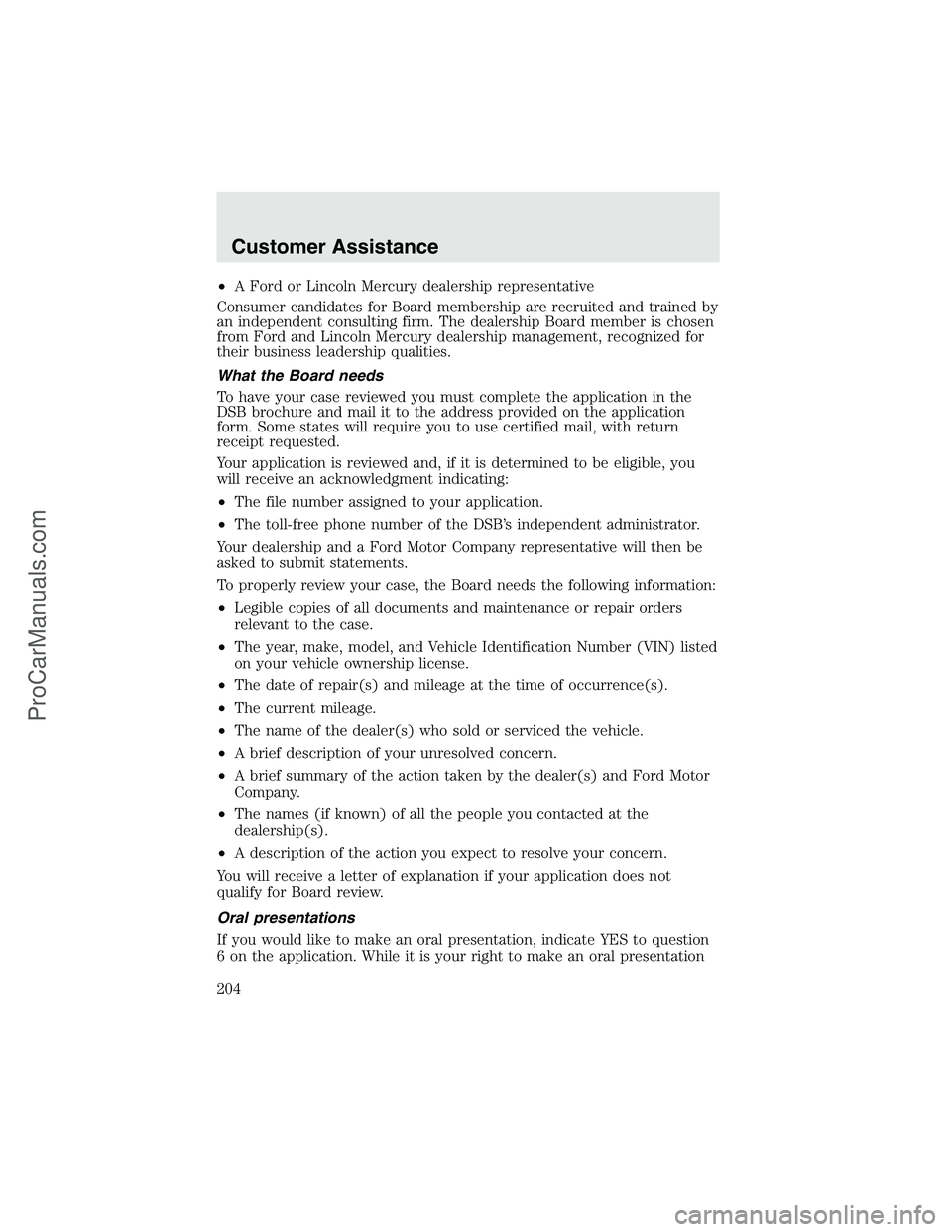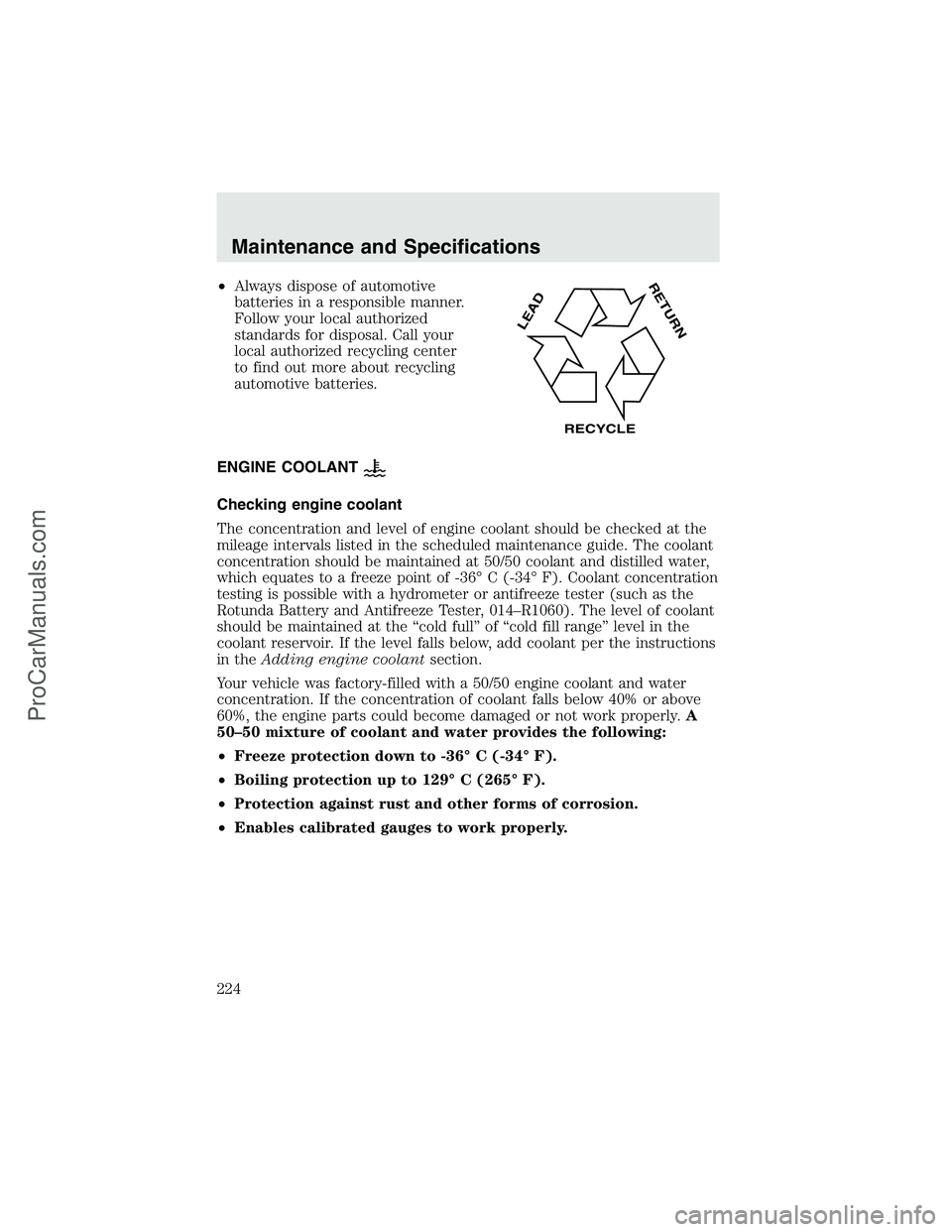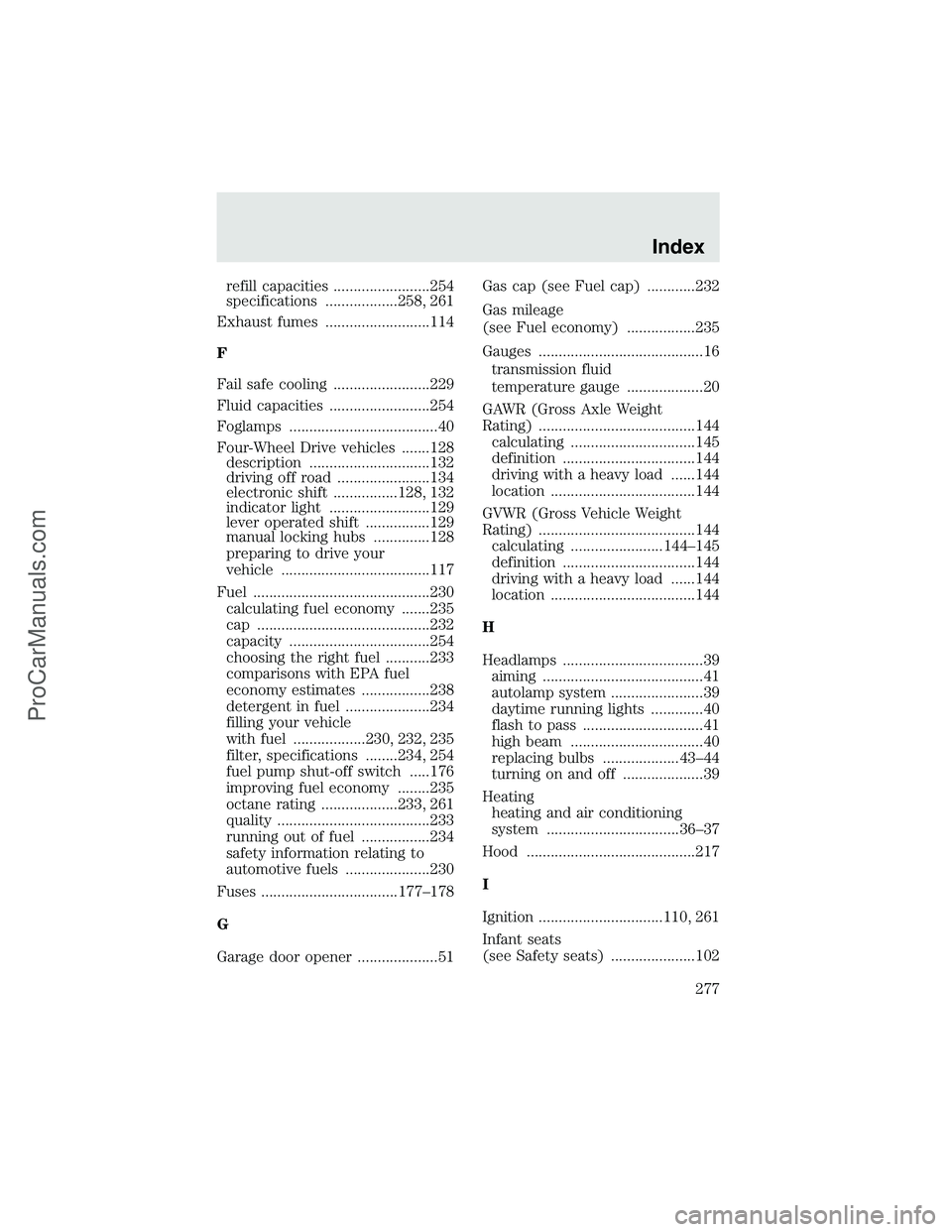Page 204 of 280

•A Ford or Lincoln Mercury dealership representative
Consumer candidates for Board membership are recruited and trained by
an independent consulting firm. The dealership Board member is chosen
from Ford and Lincoln Mercury dealership management, recognized for
their business leadership qualities.
What the Board needs
To have your case reviewed you must complete the application in the
DSB brochure and mail it to the address provided on the application
form. Some states will require you to use certified mail, with return
receipt requested.
Your application is reviewed and, if it is determined to be eligible, you
will receive an acknowledgment indicating:
•The file number assigned to your application.
•The toll-free phone number of the DSB’s independent administrator.
Your dealership and a Ford Motor Company representative will then be
asked to submit statements.
To properly review your case, the Board needs the following information:
•Legible copies of all documents and maintenance or repair orders
relevant to the case.
•The year, make, model, and Vehicle Identification Number (VIN) listed
on your vehicle ownership license.
•The date of repair(s) and mileage at the time of occurrence(s).
•The current mileage.
•The name of the dealer(s) who sold or serviced the vehicle.
•A brief description of your unresolved concern.
•A brief summary of the action taken by the dealer(s) and Ford Motor
Company.
•The names (if known) of all the people you contacted at the
dealership(s).
•A description of the action you expect to resolve your concern.
You will receive a letter of explanation if your application does not
qualify for Board review.
Oral presentations
If you would like to make an oral presentation, indicate YES to question
6 on the application. While it is your right to make an oral presentation
Customer Assistance
204
ProCarManuals.com
Page 224 of 280

•Always dispose of automotive
batteries in a responsible manner.
Follow your local authorized
standards for disposal. Call your
local authorized recycling center
to find out more about recycling
automotive batteries.
ENGINE COOLANT
Checking engine coolant
The concentration and level of engine coolant should be checked at the
mileage intervals listed in the scheduled maintenance guide. The coolant
concentration should be maintained at 50/50 coolant and distilled water,
which equates to a freeze point of -36°C (-34°F). Coolant concentration
testing is possible with a hydrometer or antifreeze tester (such as the
Rotunda Battery and Antifreeze Tester, 014–R1060). The level of coolant
should be maintained at the“cold full”of“cold fill range”level in the
coolant reservoir. If the level falls below, add coolant per the instructions
in theAdding engine coolantsection.
Your vehicle was factory-filled with a 50/50 engine coolant and water
concentration. If the concentration of coolant falls below 40% or above
60%, the engine parts could become damaged or not work properly.A
50–50 mixture of coolant and water provides the following:
•Freeze protection down to -36°C (-34°F).
•Boiling protection up to 129°C (265°F).
•Protection against rust and other forms of corrosion.
•Enables calibrated gauges to work properly.
LEAD
RETURN
RECYCLE
Maintenance and Specifications
224
ProCarManuals.com
Page 277 of 280

refill capacities ........................254
specifications ..................258, 261
Exhaust fumes ..........................114
F
Fail safe cooling ........................229
Fluid capacities .........................254
Foglamps .....................................40
Four-Wheel Drive vehicles .......128
description ..............................132
driving off road .......................134
electronic shift ................128, 132
indicator light .........................129
lever operated shift ................129
manual locking hubs ..............128
preparing to drive your
vehicle .....................................117
Fuel ............................................230
calculating fuel economy .......235
cap ...........................................232
capacity ...................................254
choosing the right fuel ...........233
comparisons with EPA fuel
economy estimates .................238
detergent in fuel .....................234
filling your vehicle
with fuel ..................230, 232, 235
filter, specifications ........234, 254
fuel pump shut-off switch .....176
improving fuel economy ........235
octane rating ...................233, 261
quality ......................................233
running out of fuel .................234
safety information relating to
automotive fuels .....................230
Fuses ..................................177–178
G
Garage door opener ....................51Gas cap (see Fuel cap) ............232
Gas mileage
(see Fuel economy) .................235
Gauges .........................................16
transmission fluid
temperature gauge ...................20
GAWR (Gross Axle Weight
Rating) .......................................144
calculating ...............................145
definition .................................144
driving with a heavy load ......144
location ....................................144
GVWR (Gross Vehicle Weight
Rating) .......................................144
calculating .......................144–145
definition .................................144
driving with a heavy load ......144
location ....................................144
H
Headlamps ...................................39
aiming ........................................41
autolamp system .......................39
daytime running lights .............40
flash to pass ..............................41
high beam .................................40
replacing bulbs ...................43–44
turning on and off ....................39
Heating
heating and air conditioning
system .................................36–37
Hood ..........................................217
I
Ignition ...............................110, 261
Infant seats
(see Safety seats) .....................102
Index
277
ProCarManuals.com